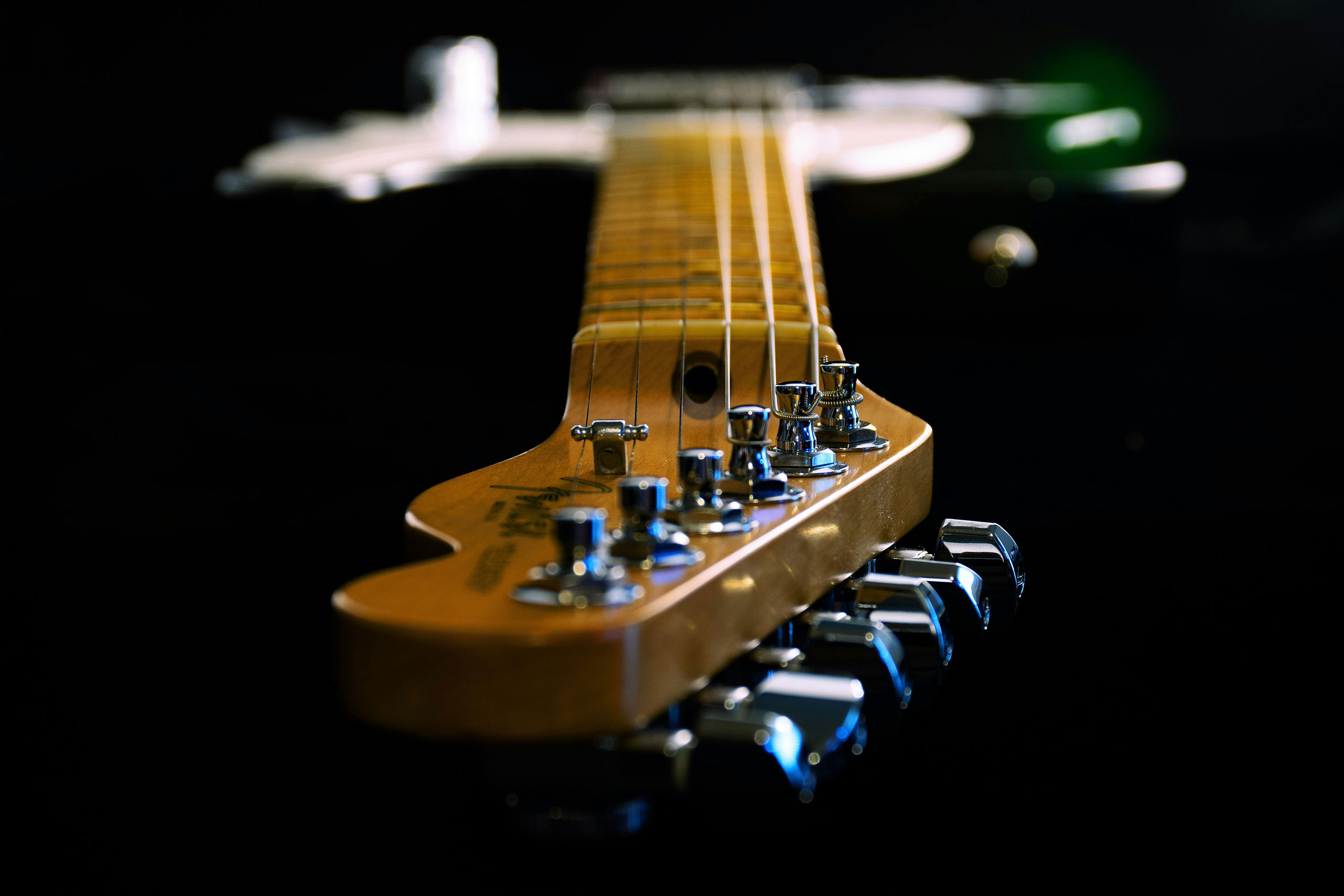Live performances put every part of an electric guitar through its paces. Performing in front of a live audience makes mistakes impossible. Rocking out at a little pub or a large stadium depends on having trustworthy and high-quality guitar parts in your electric guitar. An analysis of the significance of the most prized guitar sections played during concerts follows.
1. Pickups: The Foundation of Your Sound
The pickups on your electric guitar will be more crucial than any other component at some point during a concert. Choose between active, humbucker, or single-coil pickups to change your on-stage sound.
Humbuckers are usually the best choice when playing rock or metal. By eliminating the 60-cycle hum, their dual-coil design guarantees a distinct and powerful sound that stands out in any mix. Humbuckers are essential for heavy metal bands’ massive tones, such as Led Zeppelin and Metallica.
The distinctively bright and snappy sound of single-coil pickups has made them popular in blues and classic rock. Because of their susceptibility to noise, performances benefit from high-quality shielding and noise-cancellation solutions.
Featuring built-in preamps and producing a consistent, high-output sound, active pickups are ideal for powerful rock and metal bands that want a memorable, aggressive tone. Regarding live performances, names like EMG are synonymous with dependability.
2. Stay Strong When Things Get Tough: The Bridge
The bridge of your electric guitar determines how well it will stay in tune during strenuous concerts.
Due to their exceptional tuning stability, fixed bridges (hardtail) are a favourite among rhythm guitarists. Thanks to its basic design, fewer moving parts mean less chance of malfunction during a live performance.
Bridges with tremolo (whammy bar) effects: These are not always easy to tune, but they add flair to solos and let you dive and bend whatever you like. Floyd Rose double-locking systems are popular among lead guitarists in metal and rock bands because they keep the guitar in tune even when hammered hard.
Tuning machines: The Unsung Heroes
Tuning stability is of the utmost importance during live performances. Because losing your tune mid-song is no fun, high-quality tuning equipment is a must.
Locking tuners are especially helpful during live performances. Unlike ordinary tuners, locking tuners firmly grasp the strings, reducing the likelihood of slippage and strain. This ensures the guitar maintains its pitch integrity regardless of how hard you bend or use the whammy bar.
Grover and Schaller sealed tuners with high ratios are famously precise and dependable. Keeping your set pitch-perfect is easier because the tuning changes are finer with a higher ratio.
Neck, the Crossroads of Comfort and Performance
Choosing a guitar neck that complements your playing style is crucial for a successful live performance. Many guitarists choose a slim neck profile for fast solos, like a thin “C” or “D” shape. Guitar manufacturers like Jackson and Ibanez often use these shapes for shredders, who need to be nimble with their fretting.
Equally crucial in live performances is the substance of the fretboard. Maple fretboards make your guitar sound bright and aggressive, while rosewood fretboards make it sound warmer.
When playing dramatic solos or power chords, jumbo frets—popular at concerts—are essential because of their higher sustain and ease of note bending.
World of Precision at Your Disposal: Technology
Despite frequent neglect, the guitar’s electronic components—the output jack, volume and tone controls, and toggle switches—are indispensable during performances.
Durable potentiometers (pots): Reliable pots ensure smooth, noiseless adjustments to volume and tone. Guitarists always adjust the volume for dynamic control and need sensitive, noiseless potentiometers.
Deactivate switches: Tom Morello and other musicians use these switches to create fast stutter effects, which can add a little flair to your performance.
The Subtle Elements That Matter: Strings and Nut
Despite their seemingly insignificant appearance, the guitar nut and strings may provide a significant audible effect when played live.
If you want to experiment with different tones and sustains, try using strings of a different gauge that suit your playing style. The coated strings made by Elixir are the best option because they can withstand sweat and grime buildup better after long performances.
Material for the nut: Graphite or bone nuts provide more tuning stability than plastic nuts when using a tremolo bridge.
The Appearance and Result
Despite its lack of practicality, a guitar’s shine and aesthetic can boost your stage presence. Whether it has a unique shape or a custom paint job, an aesthetically pleasing guitar can add to the necessary stage presence for concerts. So, it is not just about looks; finishes may protect the wood from things like stage sweat and temperature swings.
Conclusion
Due to the high-pressure nature of live performances, it is essential to have fully assembled electric guitar parts. Suppose you want to put on a show that nobody will soon forget. In that case, you need every part to work together, including a sturdy fixed bridge, transparent humbucker pickups, and reliable locking tuners. In addition to enhancing your sound, investing in high-quality parts will boost your confidence, allowing you to perform with unwavering poise and certainty on stage.
This article is a guest contribution. Views expressed are the author’s own.

Leave a Reply